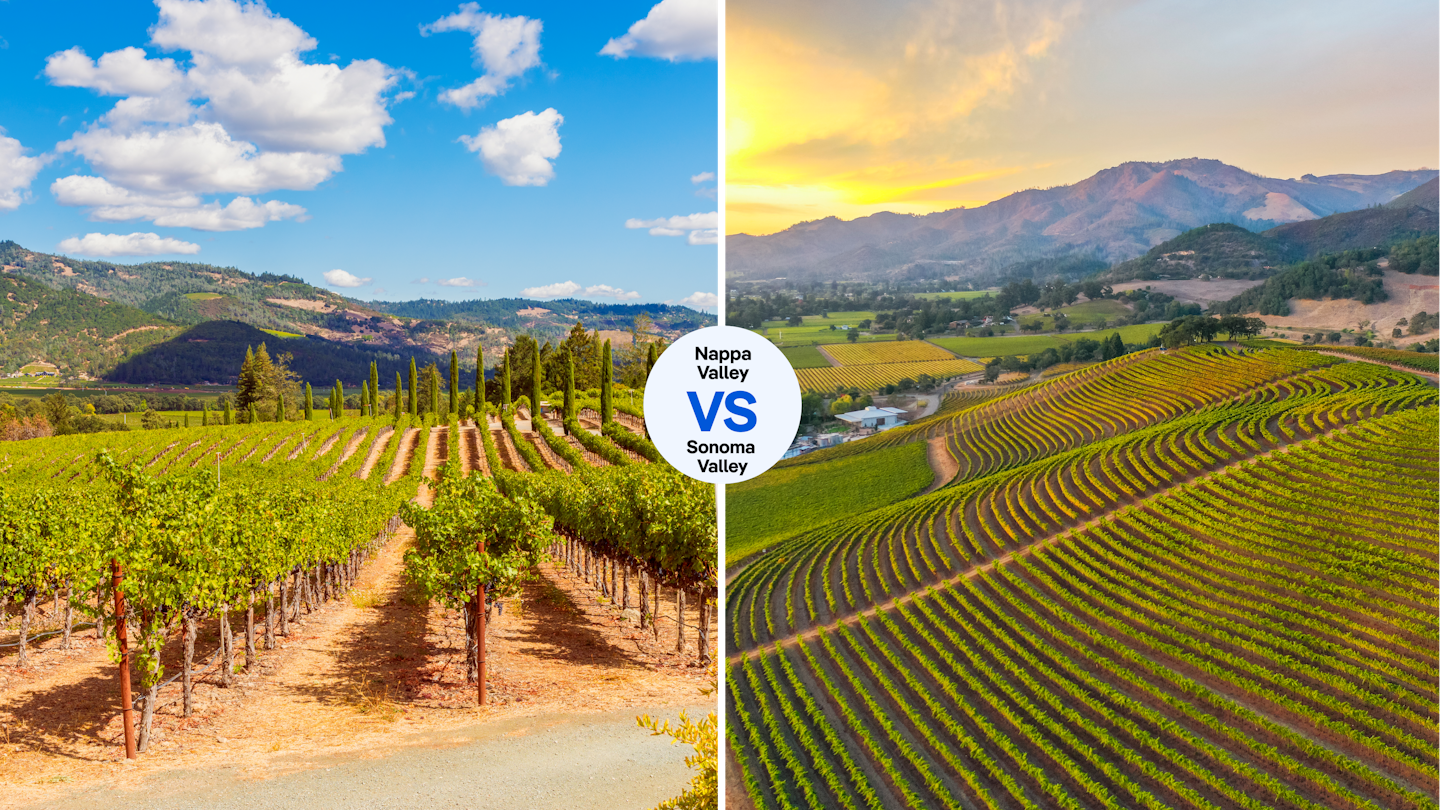Anyone who appreciates fine wine is spoiled for choice in California. Along its long coast, unique microclimates create designated wine regions that produce vintages famous worldwide. While some tasters might seek out lesser-visited destinations like Paso Robles or the Santa Ynez Valley, two regions stand out among connoisseurs of California reds, whites, and bubblies: Napa and Sonoma.
Next Time, Make it Napa
Napa rocked the world when a Stag’s Leap Wine Cellars Cabernet Sauvignon and a Chateau Montelena Chardonnay took the top prizes for red and white at the 1976 Paris Wine Tasting, famously known as the “Judgment of Paris.” Napa County continues to blaze trails for the wine industry today.
This region has always been innovative. Three of the five oldest operating wineries in California are located in Napa Valley, including Charles Krug Winery, which opened the state’s first tasting room in 1882. Moreover, Napa became the USA’s first officially designated Agricultural Preserve in 1968 and the first American Viticulture Area in California in 1981.
Despite its outsize reputation, Napa County is just 35 miles long and 5 miles at its widest point, meaning Napa’s staggering number of 475 wineries are easily accessible. In contrast, Sonoma County is nearly twice as large with fewer wineries, making visits to its taverns and tasting rooms often a bit more challenging.
A common criticism of Napa is that it’s too expensive. While luxury experiences abound, there are also numerous affordable wine tastings available, with fees averaging around $40 per person. Notably, many wineries offer tastings at more budget-friendly prices, ensuring that Napa remains approachable for all wine enthusiasts.
If you’re looking for a high-end experience, consider dining at one of Napa Valley’s 13 Michelin-rated restaurants, more than double the number available in Sonoma. For many travelers, dining at renowned spots like Kenzo or The French Laundry is a bucket-list experience.
Savor Sensational Sonoma
California’s wine country often shines a spotlight on Napa’s legendary wines and restaurants, but Sonoma consistently competes with its excellent offerings. It boasts a more diverse, friendly atmosphere and generally lower costs compared to Napa.
Costs
In Sonoma, wine-tasting experiences are significantly less, ranging from $25 to $65, depending on the winery. Similarly, accommodations are more reasonable, particularly in surrounding areas like Santa Rosa or Petaluma.
Experience
Sonoma offers a more down-to-earth experience, with smaller, family-run wineries providing personalized service. Unlike Napa, where large commercial wineries dominate, Sonoma maintains its family-oriented charm.
Flexibility and Dining
In Napa, bringing food onto most winery premises is prohibited; however, Sonoma allows visitors to pack a picnic. Additionally, while Napa is acclaimed for its upscale dining, Sonoma features extraordinary eateries with a more relaxed vibe, thriving on farm-to-table concepts.
Overall, Sonoma is characterized by varied landscapes—rugged green peaks and charming valleys—providing a more picturesque setting. This diverse geography allows for better exploration without the crowding typical of Napa’s single access road.

For those seeking beyond-wine experiences, Sonoma delivers with outdoor adventures. Options include walking along Pacific beaches, hiking through redwoods, biking vineyard-edge roads, and enjoying water sports on the Russian River.
The Verdict
The ongoing debate of “Napa or Sonoma?” often leans toward Sonoma. It offers intimate experiences, diverse landscapes, and lower costs, making it an undeniably attractive option for wine lovers.




